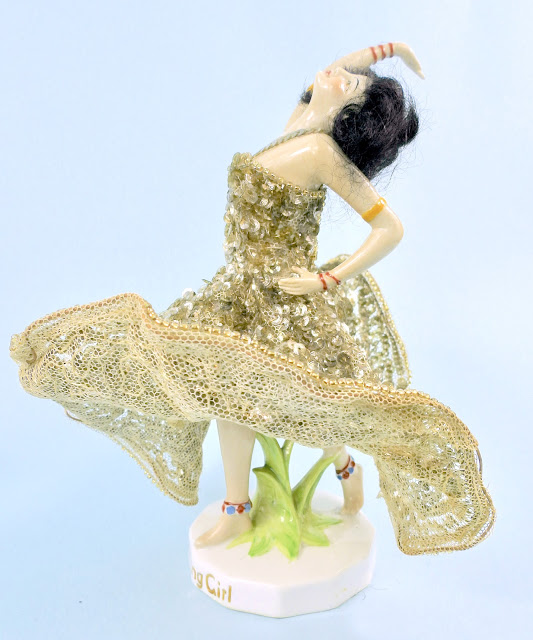Some fresh felines join my maneki neko page.
Postcard Image

As the Victorian era passed into the Edwardian and Roaring Twenties, a market developed for bisque and china bawdy novelties and figurines of women in revealing outfits. Although now most of these figurines seem more coy and cute than ribald and risque, in their time they symbolized the casting off of the perceived restraints of the Victorian era.
These little lovelies included bathing beauties, who came clad in swimsuits of real lace or in stylish painted beach wear, as well as mermaids, harem ladies, and nudies, who were meant to wear nothing more than an engaging smile. Also produced were flippers, innocent appearing figurines who reveal a bawdy secret when flipped over, and squirters, figurines that were meant to squirt water out of an appropriate orifice.
Most were manufactured in Germany from the late 1800s through the 1930s, often showing remarkable artistry and imagination, with Japan entering the market during World War I.
Saturday, January 22, 2022
Thursday, January 6, 2022
Dancing Queen
You are the dancing queen
Young and sweet
Only seventeen
Dancing queen
Feel the beat from the tambourine, oh yeah
Dancing Queen, 1976, ABBA
According to the caption on her base, she is the "Dancing Girl," rather than queen, but she certainly appears to be having the time of her life. Seven inches tall, this is a half or pincushion doll on her original base. The two pieces were clearly meant to go together (the half doll is incised on her base "19174" and under the base is the matching number "19175"). I don't know whether the extravagant dress is original, but it is old and beautifully made of sequined net trimmed in tiny seed beads; the flared skirt has fine wire around the hem to give it shape. Underneath she has a muslin half slip with lace trim similar to the factory made garments found on antique dolls.

Clearly meant to be a maiden from the Middle East, she has a black mohair wig, an olive complexion, and is well-accessorized with a variety of molded bangles and baubles. Her face is beautifully painted.

Joining the two pieces is some sort of fibrous substance, perhaps wood, but both pieces have matching sew holes so I wonder whether there might have originally been a fabric pincushion between them.

Subscribe to:
Posts (Atom)

